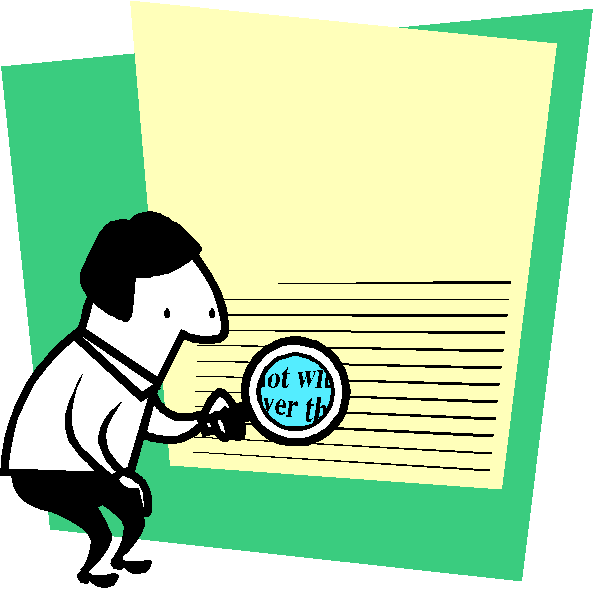
- •И.А. Шерсткова
- •Essential business english practice
- •Практикум по основам делового общения на английском языке
- •Учебное пособие
- •Предисловие
- •Getting acquainted
- •1. Match the greetings with the most likely responses.
- •2. Joan Robertson is a Personnel Department manager at Travel With Us tour agency. She is introducing Pamela to her new co-workers.
- •3. How do you introduce / greet friends / business people in your country and in other countries?
- •4. Mr Lawrence is meeting Alice Green for the first time. They are in Mr Lawrence’s office in London.
- •Saying goodbye
- •7. Match the situations with the sentences.
- •8. Now say goodbye to each other. Use the phrases in ex.6 above.
- •9. Remember how to say ‘thank you’ and how to respond to thanks in English.
- •Tell me about yourself
- •10. Alice and Steve meet each other for the first time at their friend’s birthday party. Read their conversation and fill in the missing phrases given below the dialogue.
- •11. Match the questions with the answers below.
- •12. Imagine you are one of the persons below. Interview your partner and answer your partner’s questions about you.
- •13. Change partners. Ask your new partner about his/her first partner. What’s your position in your company?
- •14. Match positions with their descriptions.
- •15. Communication activity.
- •Making telephone calls
- •1. Work in groups. Find out your partners’ opinions.
- •2. Look at the chart below for key language and phrases used in telephone English and learn them by heart.
- •Incoming calls (when you receive a call)
- •Identifying your company (from the switchboard) (Представление своей компании по многоканальному телефону)
- •Identifying yourself when you pick up the phone (Представление себя)
- •Outgoing calls (when you make a call)
- •Introducing yourself (Представление себя)
- •3. Study some other useful expressions and remember them:
- •4. Study the following example of Business Telephone Conversation.
- •5. Study the phone conversation. Putting Someone Through
- •6. Study the dialogue, translate it and answer the questions below.
- •7. Rewrite the following conversation to make it sound more polite.
- •8. Complete the conversation using the words and phrases in the box.
- •9. Study the dialogues. Taking a Message #1
- •10. A few common expressions are enough for most telephone conversations. Practise these telephone expressions by completing the following dialogue using the words listed below.
- •11. Put the sentences below in the correct order. Some numbers have already been given to help you follow the line of the conversation. Role-play the situation.
- •Making appointments
- •1. Answer the questions.
- •2. Study the key vocabulary for making arrangements.
- •3. Lisa Watson wants to make an appointment to see Martin Lennon. Complete Martin’s half of the dialogue with sentences a) to h).
- •5. It’s time for the role-play activity. Work in pairs. Student a calls to postpone, bring forward or cancel an appointment. Student в is a secretary and answers a phone call.
- •7. Role-play the following telephone situations.
- •Leaving voicemail messages
- •9. Now practise leaving your own voicemail messages. You can make return messages to callers in ex.8. Going on a business trip by air
- •Buying air tickets
- •1. Remember the following words and expressions.
- •2. Study the dialogue, then cover the English variant and practise translating it from Russian into English.
- •3. Read the dialogue and fill in the missing sentences.
- •4. Study the dialogue below and answer the questions that follow it.
- •5. Put the sentences below in the correct order to make a dialogue.
- •6. You are in London and you want to buy a ticket for Rome. Complete the dialogue.
- •7. Study the following conversation.
- •8. Read the dialogue and fill in the missing words.
- •9. Study the dialogue below and answer the questions that follow it.
- •10. Look at the Categories and Options box. Then role-play the conversation using different options. Use ex.9 as a model.
- •11. Communication activity. Situation 1.
- •Situation 2.
- •12. Ask your partner these questions:
- •13. Study the dialogue below.
- •At the airport
- •1. Remember the following words and expressions.
- •2. Match the signs you can see at the airport with their Russian equivalents and remember them.
- •3. Look at this diagram indicating basic airport procedure and layout.
- •4. Read the leaflet ‘Mackenzie Airport Welcomes First-Time Fliers’. It describes the procedure for passengers at an airport. Fill in the gaps with words or phrases from the list below.
- •5. Imagine you are flying from Europe to the usa. Number the following events in a logical order.
- •6. Choose the correct answer.
- •7. Communication activity.
- •8. Work with a partner. Role-play the situations:
- •Check-in
- •9. Read the dialogue and fill in the missing words.
- •11. Communication activity.
- •At the gate
- •On board
- •1. You are on the plane. You may have the following conversation:
- •2. Below there are two announcements you can hear while you are on the plane. Study them and fill in the missing words from the boxes.
- •3. The following is a list of signs you can see in an airplane. Match the signs with their Russian equivalents and remember them.
- •In-flight meals
- •4. Here’s a conversation you might have on the plane:
- •5. Read the dialogue.
- •Passport control & customs
- •1. Answer the questions.
- •2. Remember the following words and expressions.
- •3. Translate the following into English using the active vocabulary from ex.2.
- •4. Study the dialogue. At Passport Control
- •5. Role-play the conversation ‘At Passport Control’ using the prompts below.
- •6. Study the conversation. At Customs
- •7. Role-play the conversation ‘At Customs’ using the prompts below.
- •8. Now you fill in a Customs Declaration form.
- •Currency exchange
- •1. Remember the following expressions.
- •2. Study the dialogue.
- •3. Now you go to a currency exchange office and buy or sell foreign currency.
- •1. Answer the questions.
- •2. Remember the following words and expressions.
- •3. Choose the correct variant.
- •Hotel reservations
- •4. Study the dialogue below.
- •5. Work with a partner. Translate the following into English.
- •Hotel check-in
- •6. Study the dialogue below.
- •7. Put the lines of the dialogue below in the correct order.
- •8. Now you complete a hotel guest registration card.
- •9. Below is a mixed up conversation. Rearrange the conversation so that it makes sense. Also circle an r if the receptionist is saying the line or a g if the guest is saying the line.
- •10. Communication activity.
- •11. Communication activity.
- •Room service
- •12. It’s ten o’clock at night. A guest calls room service to ask for something. Study the dialogue.
- •Hotel problems
- •13. Put the lines of the dialogue in the correct order.
- •Checking out
- •14. Remember the following expressions:
- •15. Study the dialogue.
- •16. Translate the following into English and role-play the situation using the cards below.
- •Job hunting
- •1. Discuss these questions:
- •2. Study and learn some useful vocabulary that can be handy in job hunting.
- •3. Translate the following into English using the active vocabulary from ex.2.
- •Job interview
- •4. Study and summarize (in English or Russian) the following information about job interviews.
- •5. Imagine you have been invited for an interview. Here are some typical questions you can be asked. Think them over beforehand and prepare your answers.
- •6. Role-play.
- •7. Discuss the following questions.
- •8. Study the information concerning applying-for-a-job correspondence. Pay special attention to ready-to-use model sentences for your letters. Letters of application
- •Application forms and cVs
- •Covering letters
- •9. Study and translate the samples of applying-for-a-job correspondence below. Unsolicited letter
- •Application form
- •Covering letter
- •Curriculum vitae (resume)
- •Cv Writing Tips
- •10. Now work in pairs. Decide whether you in your country and in your line of business would normally give the information below in
- •11. Below there is a typical cv for a recent graduate. Study and translate it, then answer the following questions:
- •Accepting a post
- •Nb for Russian cv writers
- •13. Now you practice writing your own cv, covering and unsolicited letters, and a letter accepting the post.
- •4. Study the information below about the main principles of a successful presentation.
- •Introduction
- •5. Now study the text of the presentation about Tara Fashions.
- •7. Trade Conference.
- •Negotiations
- •1. Study the information below and answer the questions which follow it.
- •Negotiating Across Cultures
- •2. Work in groups of four. You are each going to read an article (taken from the financial times) about a different negotiating style. Choose either Article a or b, or Article c or d below.
- •3. Work in your groups to answer these questions.
- •4. Study the information about the process of negotiating and summarize it in English or in Russian. Art of Negotiating
- •Types of negotiating
- •The Negotiation Process
- •Coming to a Close or Settlement
- •5. Study the situation below. What negotiating strategy and rules did Markus use?
- •In ex.5 above find examples of ‘negotiating vocabulary’.
- •7. Practise your ‘negotiating vocabulary’ by matching parts of sentences from columns a and b to make correct sentences.
- •8. Study the dialogue. The Negotiation Game
- •9. Work in pairs. Student a is the customer; student b is the supplier. You are negotiating the sale of some bricks. These are the negotiators’ objectives in the beginning.
- •Bibliography
- •Contents
13. Now you practice writing your own cv, covering and unsolicited letters, and a letter accepting the post.

MAKING PRESENTATIONS
‘The best way to sound like you know what you’re talking about is
to know what you’re talking about.’
Author Unknown
1. Answer the questions.
When and why do people give presentations? What do they usually make presentations about?
Have you ever had to give presentations? Were they in English or in Russian?
What is the most difficult thing about giving presentations?

2. Which of these suggestions do you agree with?
To make an effective presentation, you should:
find out as much as possible about your audience.
introduce yourself (name, position, company).
start with a joke.
outline the structure of your talk.
vary the tone of your voice.
refer to your notes as often as possible.
use clear visual aids.
summarise your main points.
3. A company boss is presenting his company to potential investors. The presenter does not follow the usual tips for presentations and irritates the investors. Match the tips 1 to 6 that the presenter does not follow with the audience’s reactions a) to f).
|
Presentation tips |
Audience’s reactions |
|
|
4. Study the information below about the main principles of a successful presentation.
If you want your audience to understand your message, your language must be simple and clear. Use short words and short sentences. In general, talk about concrete facts rather than abstract ideas.
Most presentations are divided into 3 main parts (+ questions):
|
1 |
INTRODUCTION |
(Questions) |
|
2 |
BODY | |
|
3 |
CONCLUSION | |
|
|
Questions |
|
As a general rule in communication, repetition is valuable. In presentations, there is a golden rule about repetition:
say what you are going to say,
say it,
then say what you have just said.
I n
other words, use the three parts of your presentation to reinforce
your message. In the introduction, you tell your audience what your
message is going to be. In the body, you tell your audience your
real message. In the conclusion, you summarize what your message
was.
n
other words, use the three parts of your presentation to reinforce
your message. In the introduction, you tell your audience what your
message is going to be. In the body, you tell your audience your
real message. In the conclusion, you summarize what your message
was.
